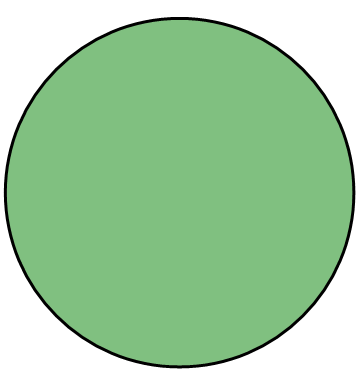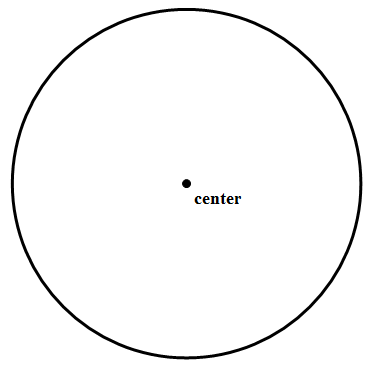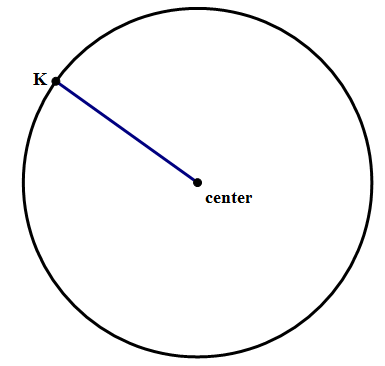
A series of five articles on circles.
2) Geometry: Circles and Angles
4) Inscribed and Circumscribed Circles and Polygons
5) Slicing up Circles: Arclengths, Sectors, and Pi
Here is a rundown of geometry facts you might need to know about circles.
A circle is the set of all points equidistant from a fixed point. That means a circle is this:
and not this:

In other words, the circle is only the curved round edge, not the middle filled-in part. A point on the edge is “on the circle”, but a point in the middle part is “in the circle” or “inside the circle.” In the diagram below,
By far, the most important point in the circle is the center of the circle, the point equidistance from all points on the circle.

Any line segment that has both endpoints on the circle is a chord.

By the way, the word “chord” in this geometric sense is actually related to “chord” in the musical sense: the link goes back to Mr. Pythagoras (c. 570 – c. 495 BCE), who was fascinated with the mathematics of musical harmony.
If the chord passes through the center, this chord is called a diameter. The diameter is a chord. A diameter is the longest possible chord. A diameter is the only chord that includes the center of the circle.
The diameter is an important length associated with a circle, because it tells you the maximum length across the circle in any direction.
An even more important length is the radius. A radius is any line segment with one endpoint at the center and the other on the circle.

As is probably clear visually, the radius is exactly half the diameter, because a diameter can be divided into two radii. The radius is crucially important, because if you know the radius, it's easy to calculate not only the diameter, but also the other two important quantities associated with a circle: the circumference and the diameter.
The circumference is the length of the circle itself. This is a curve, so you would have to imagine cutting the circle and laying it flat against a ruler. As it turns out, there is a magical constant that relates the
If you remember the second, more common form, you don't need to know the first. The number
These two formulas follow from the definition of
This is another formula you need to know cold on test day.
1) Given that a “
(A)
(B)
(C)
(D)
(E)
2) What is the diameter of circle
Statement #1 — the circumference of
Statement #2 — the area of
Q1. The
Q2. Statement #1: if you know the circumference, then you can use
Statement #2: if you know the area, you can find the radius, and then double that to get the diameter. This statement by itself is also sufficient.
Both statements alone are sufficient.
Answer = D